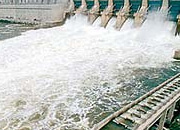The Bank’s investment in this non-callable, fixed interest rate bond aims to attract new classes of investors such as pension funds, mutual funds, asset managers and insurance companies seeking to access rouble-denominated credit which is clearable through international depositories.
The issue, the second rouble corporate Eurobond currently traded on the market, also has appeal for investors with a natural appetite for fixed coupon, long-term bonds in emerging market currencies issued by higher quality borrowers.
This broadening of the availability of rouble assets also serves to support the internationalization of the currency. It represents yet another step towards the Russian government’s goal of increasing the international visibility of the Russian economy and promoting the rouble as a future reserve currency.
As long-term bonds are crucial to funding long-term capital expenditures, the success of this issue is expected to encourage other strong Russian borrowers to access capital markets in search of longer maturities. This issue will help establish a pricing benchmark for future Russian borrowers in this market.
Although the rouble corporate bond market has recovered since the crisis, most bond issues on Russia’s domestic market continue to include short-term put options, thereby shortening tenors from 7-10 years to 1-3 years in practice.
The coupon on RusHydro’s 20-billion rouble bond has been fixed at 7.875 percent. The bond is redeemable at par on maturity.
The EBRD's 4.5 billion rouble investment in this Eurobond issue is intended to provide funding to RusHydro to assist with the refurbishment and rehabilitation of its Saratovskaya Hydro Power Plant.
In 2006, the EBRD raised 6.3 billion roubles for RusHydro to finance a modernisation programme which will extend by at least a quarter of a century the life of nine power stations of the Volga-Kama cascade, one of the country’s largest sources of hydro power.
14 Декабря 2025 | воскресенье | 04:32


